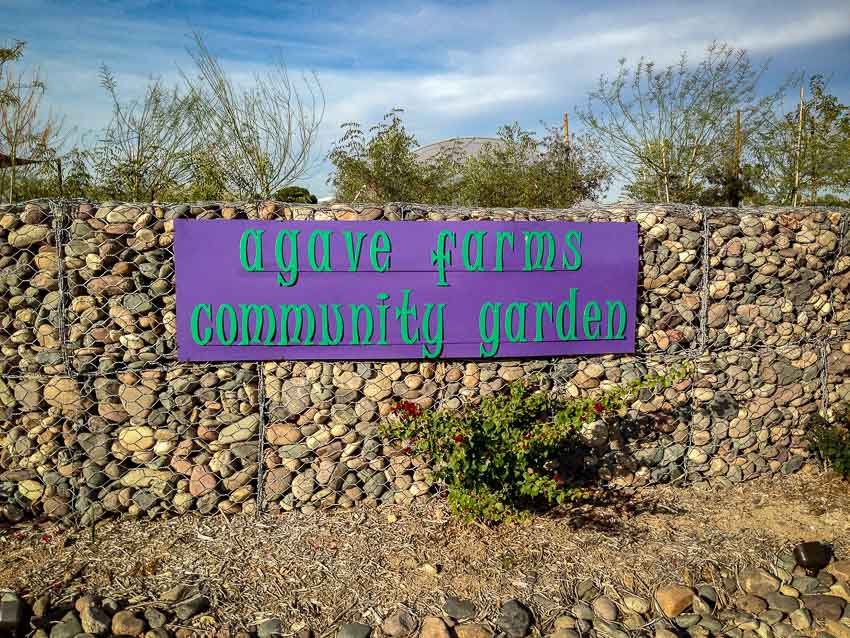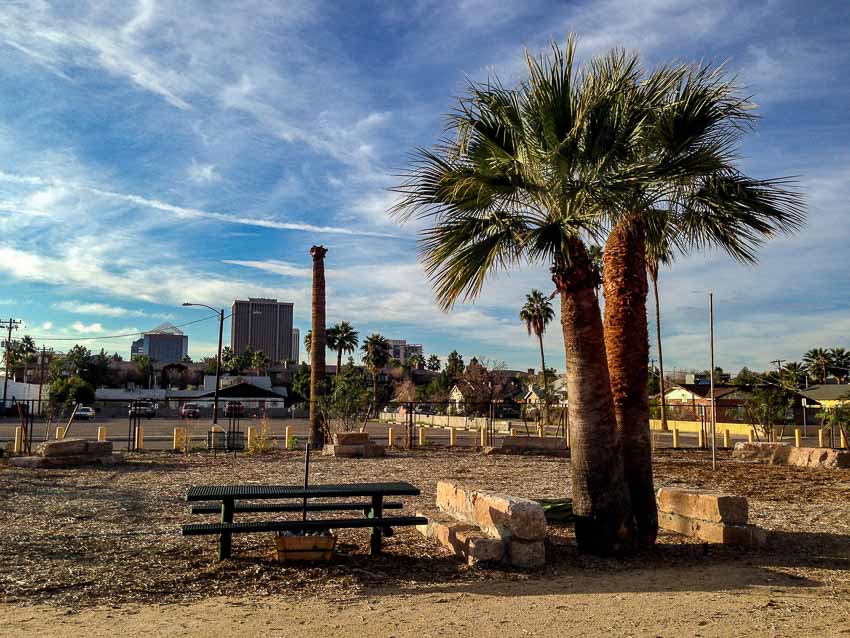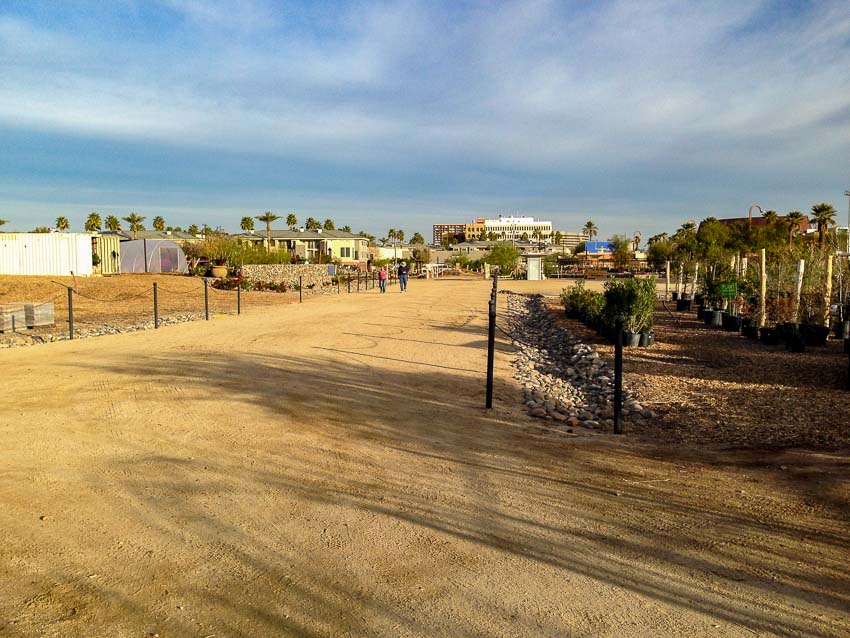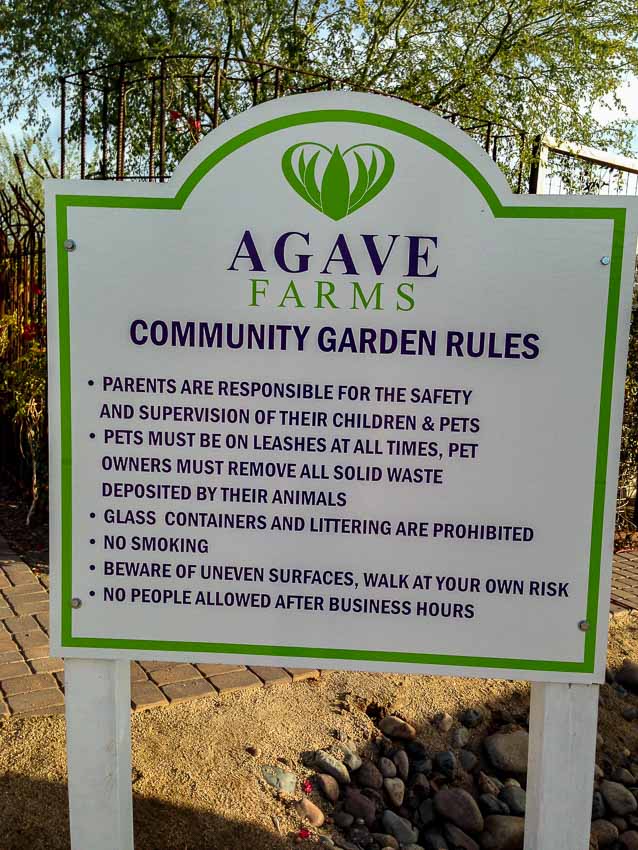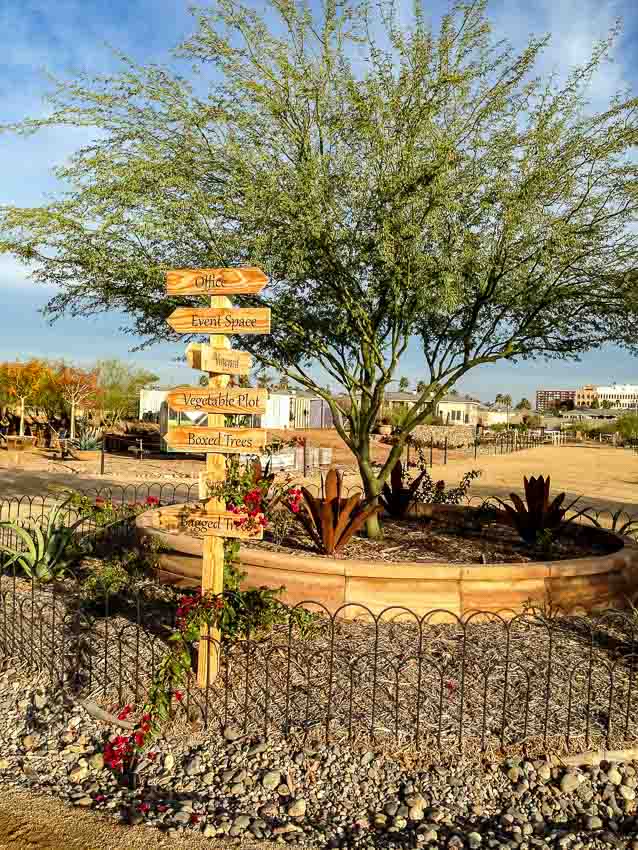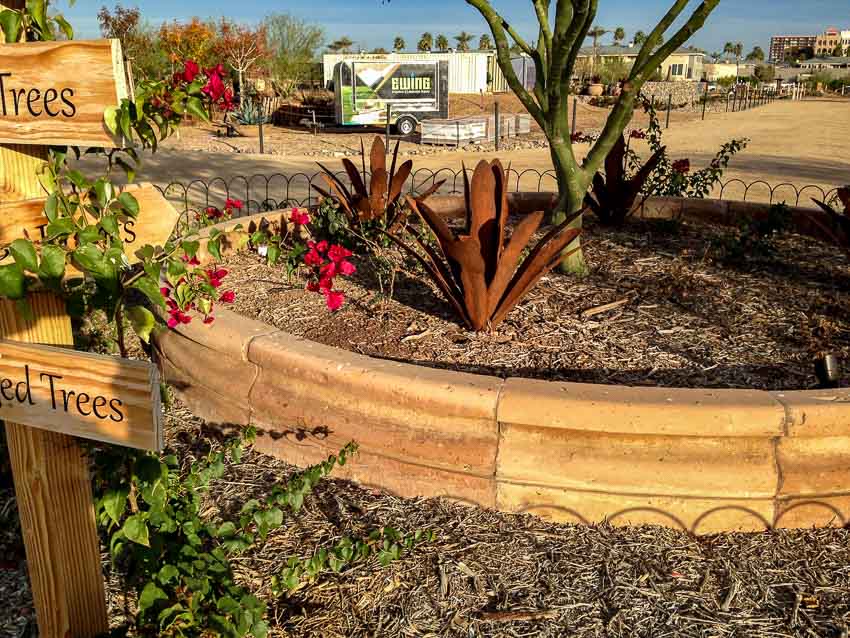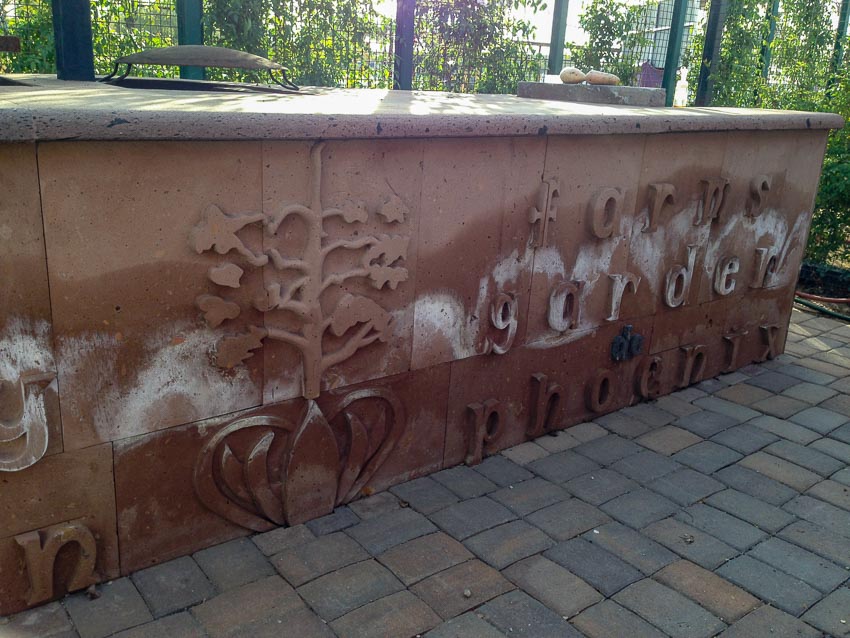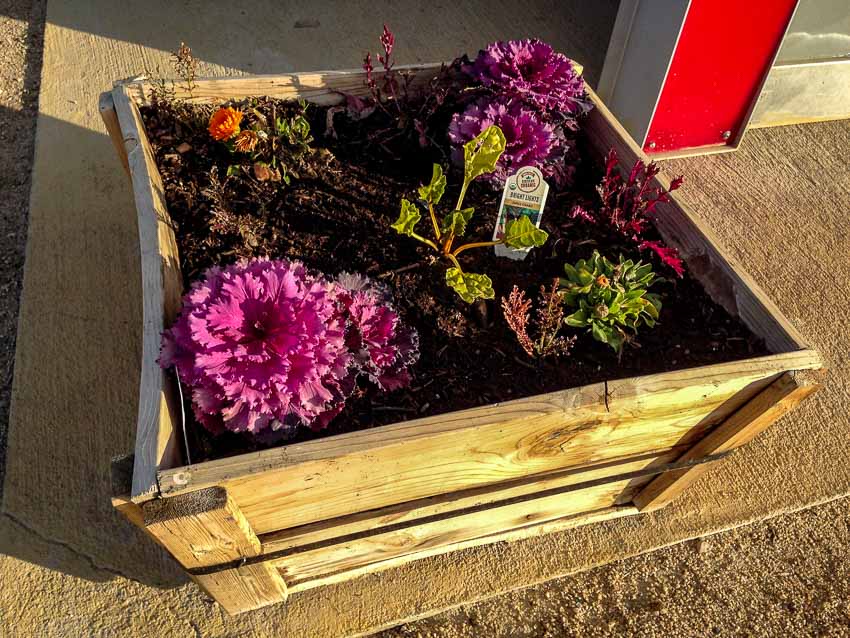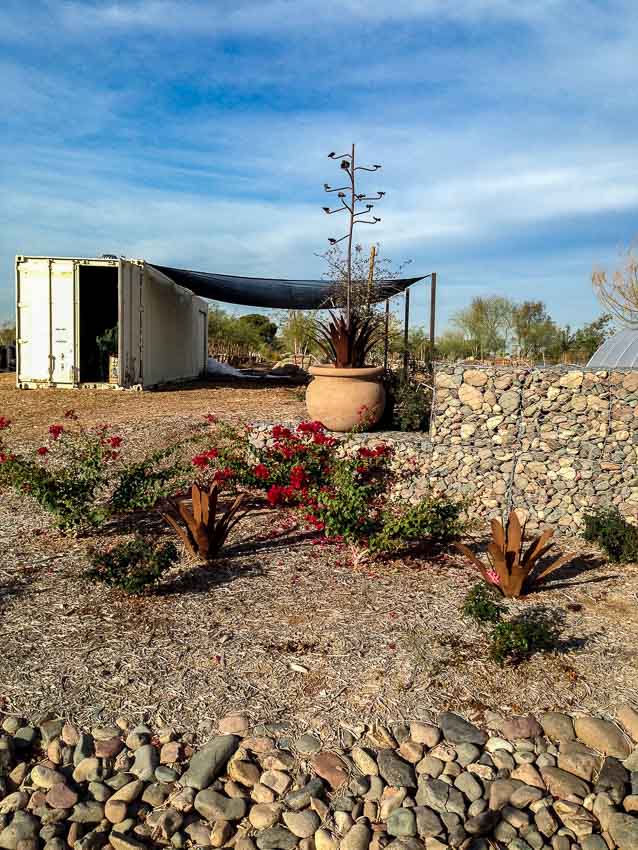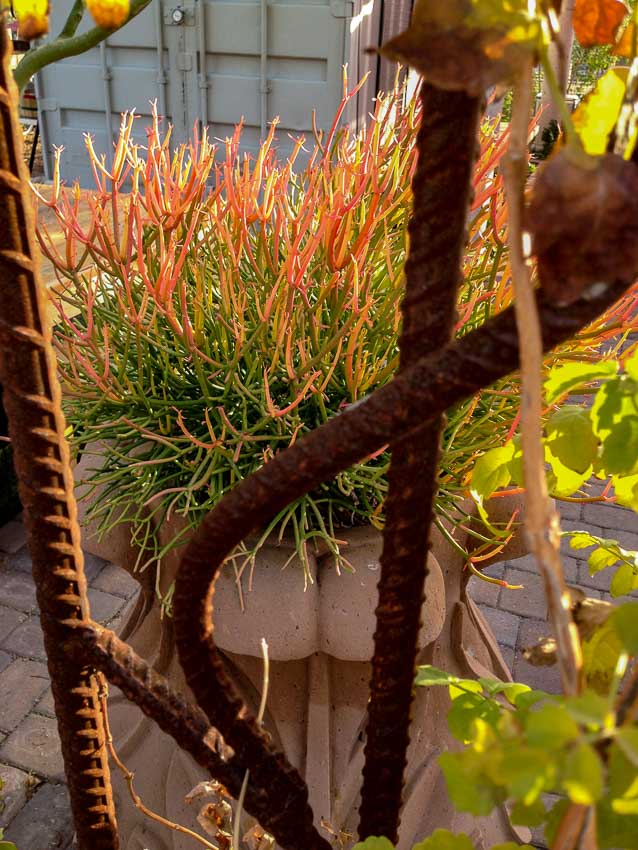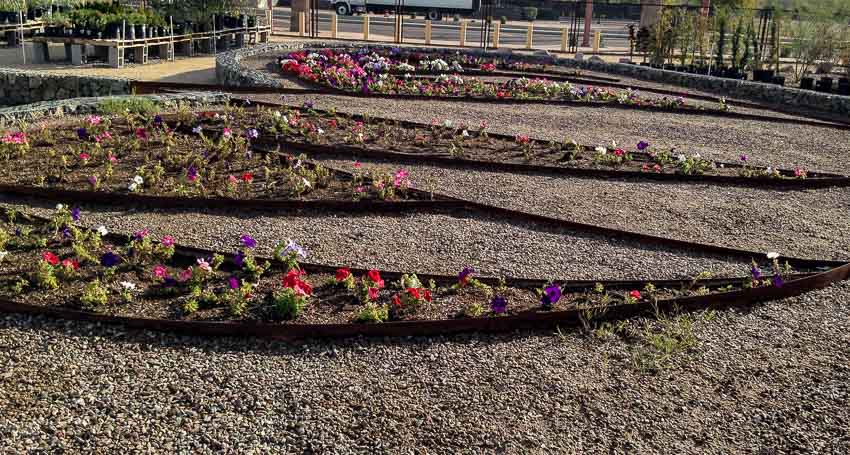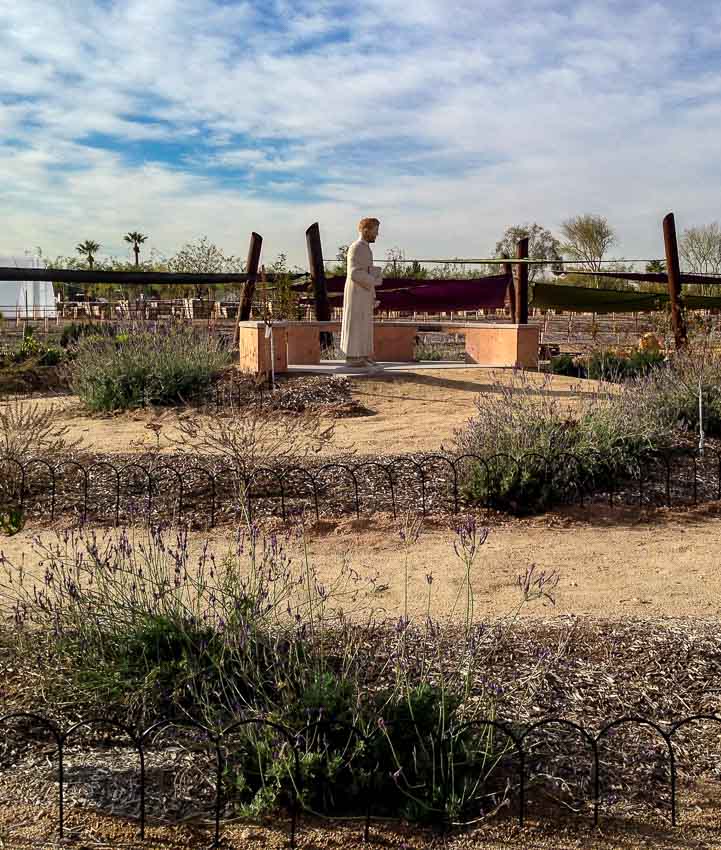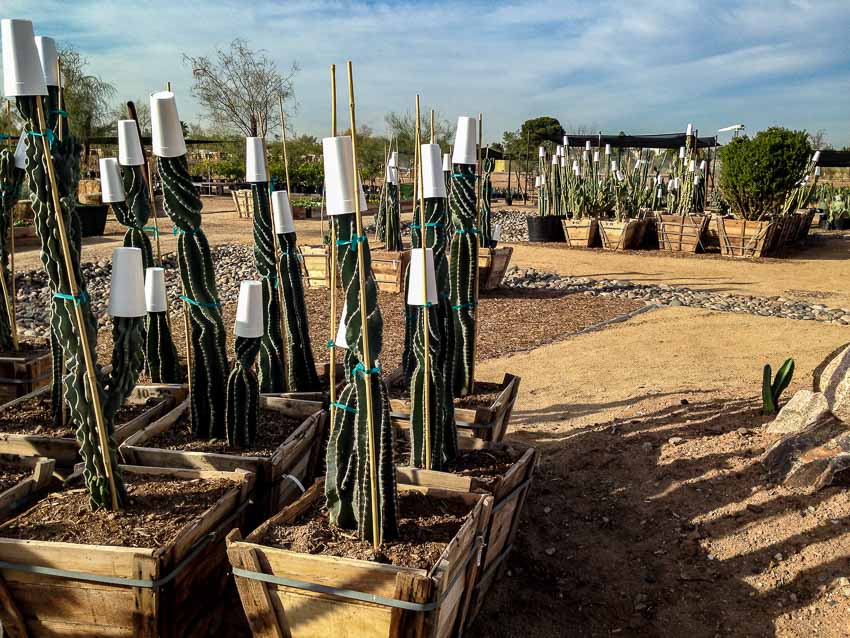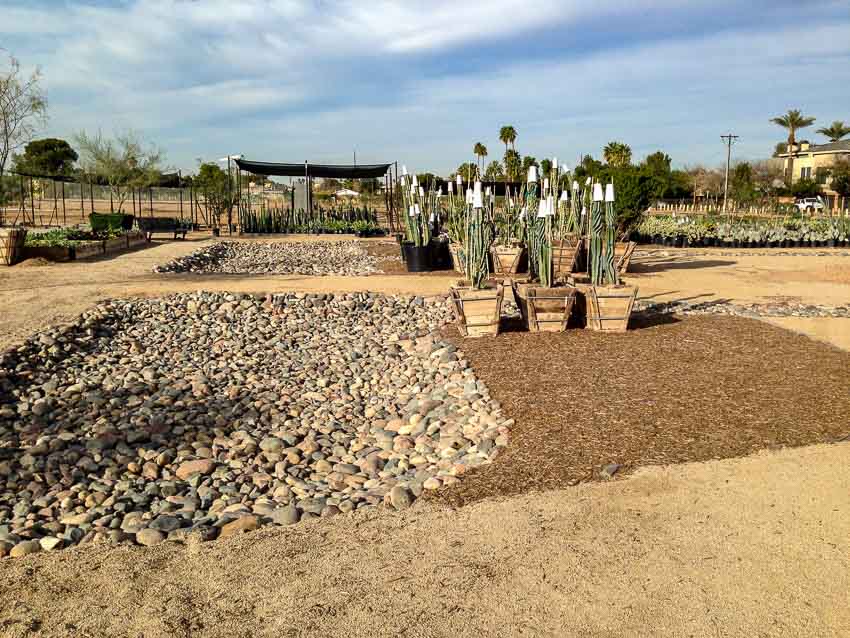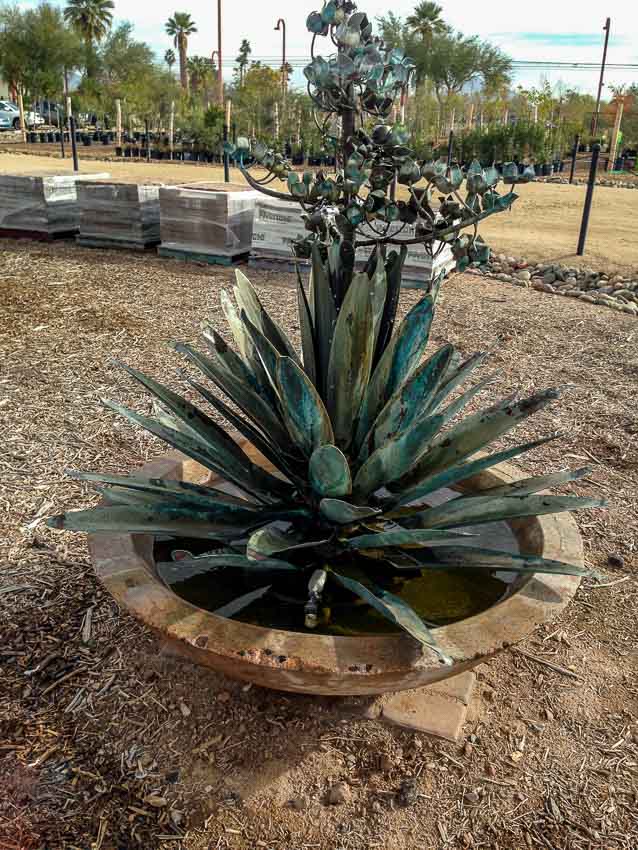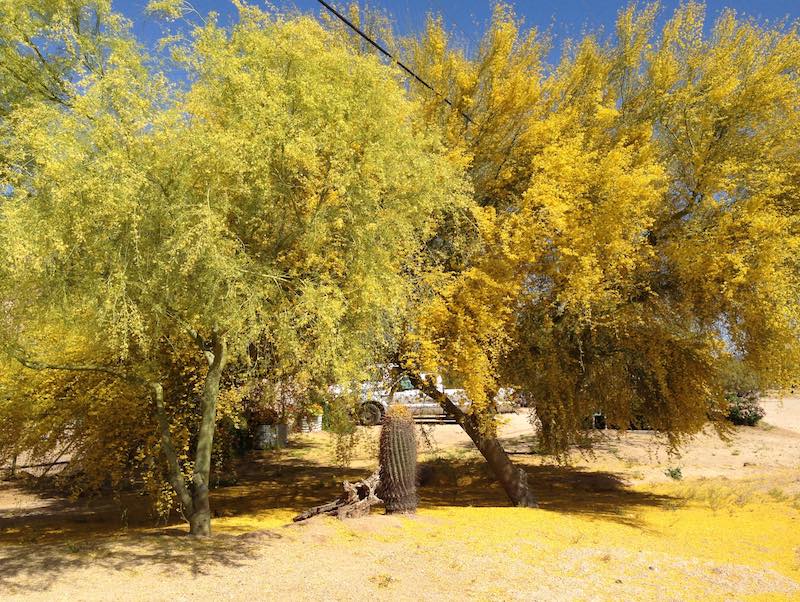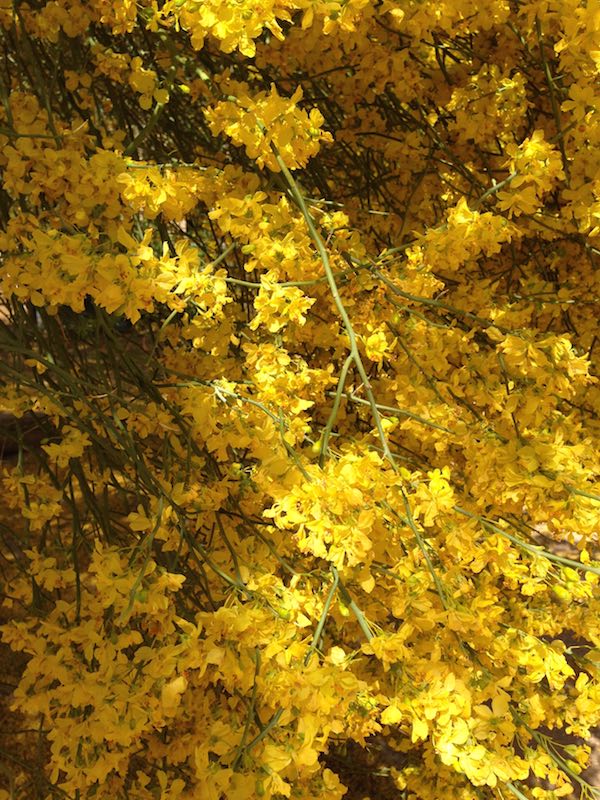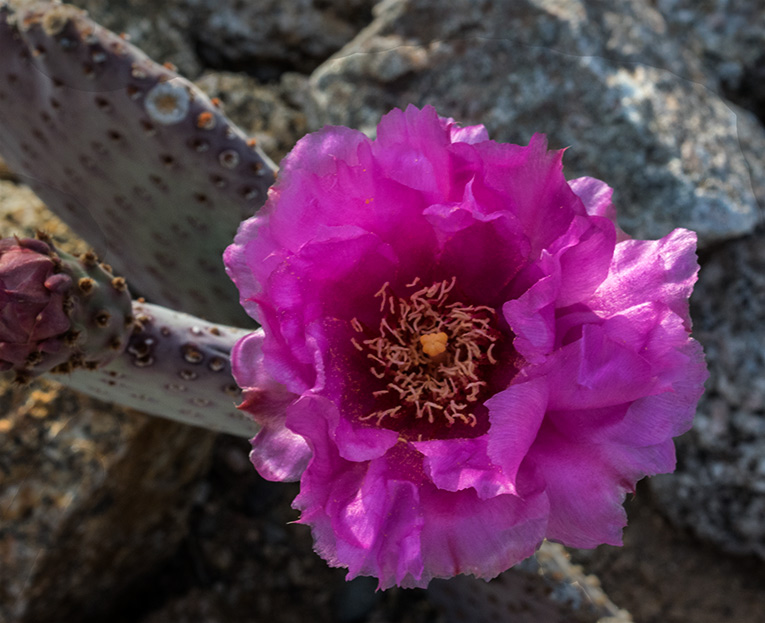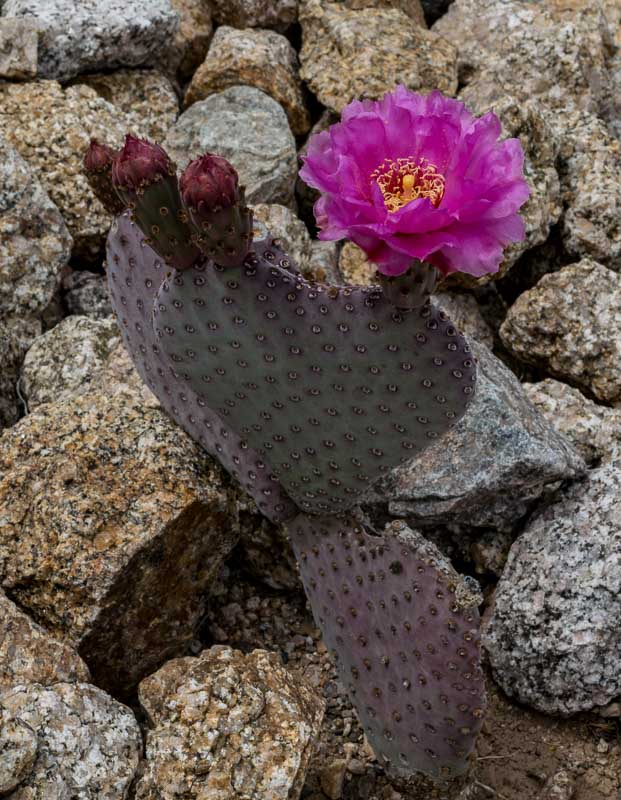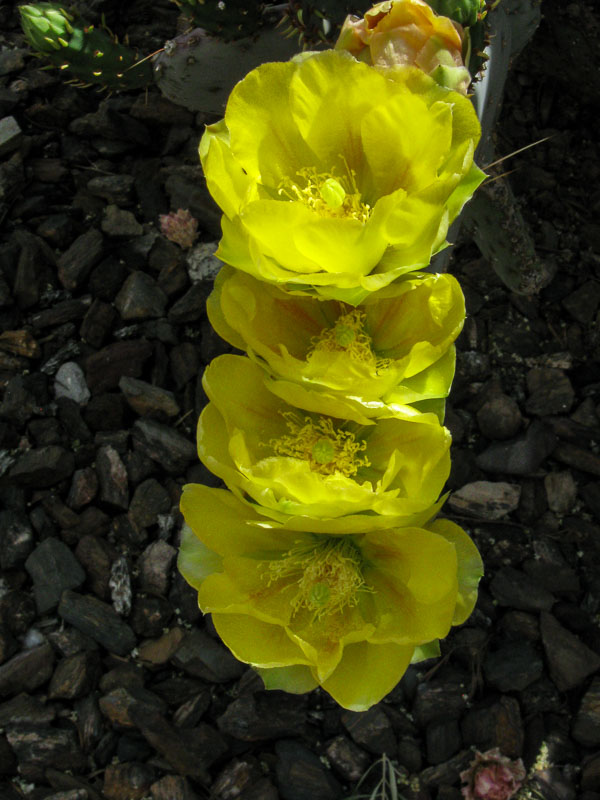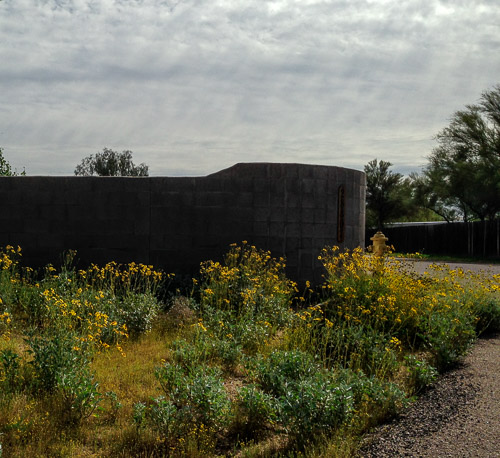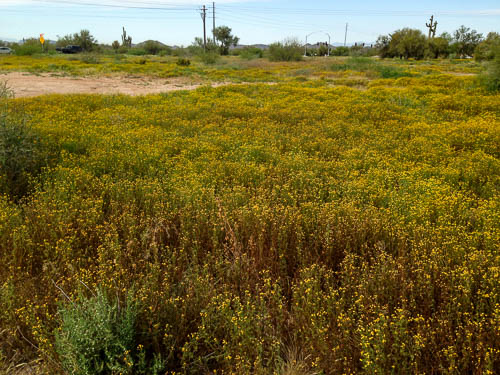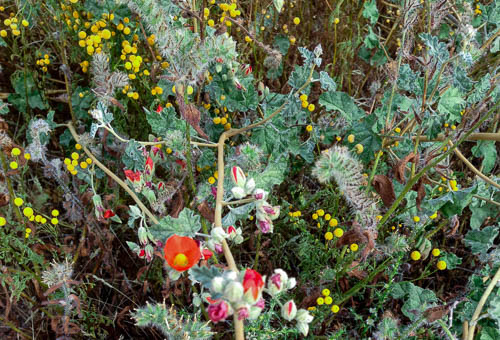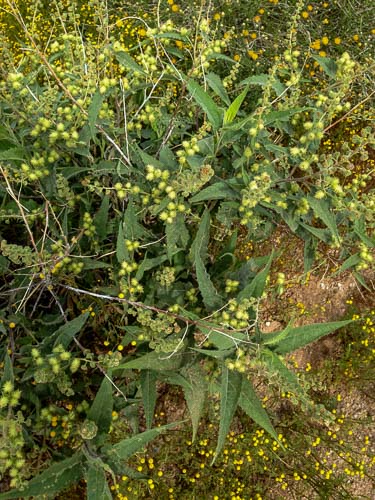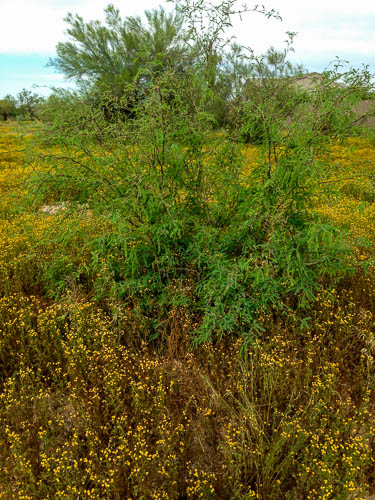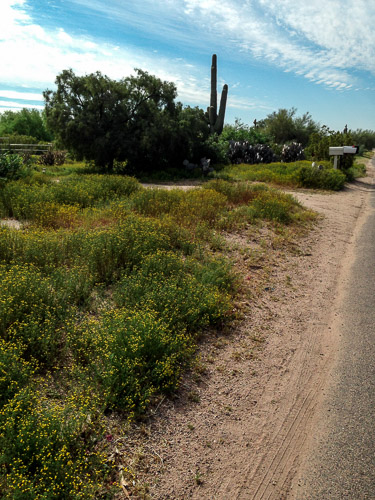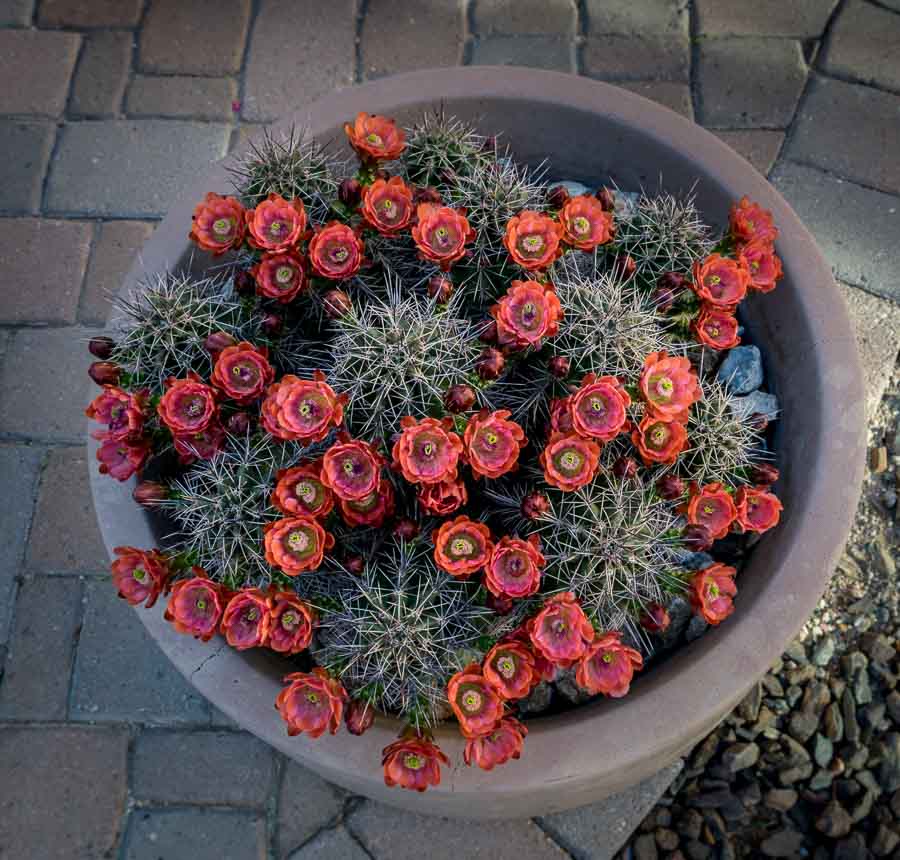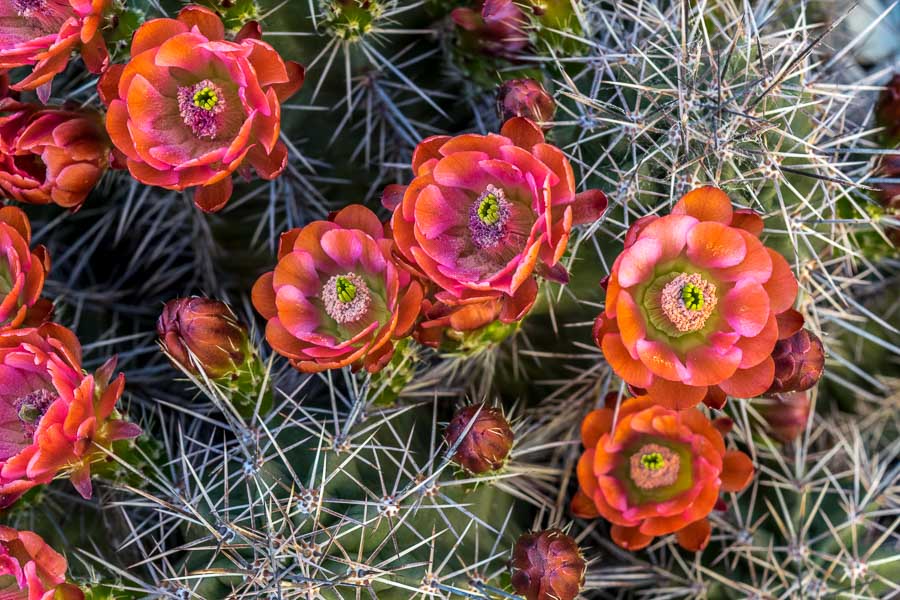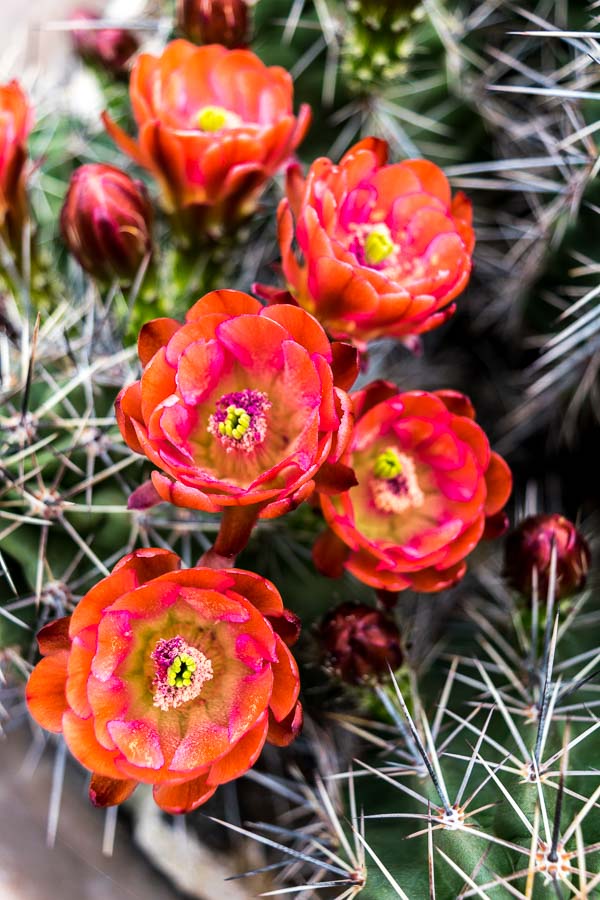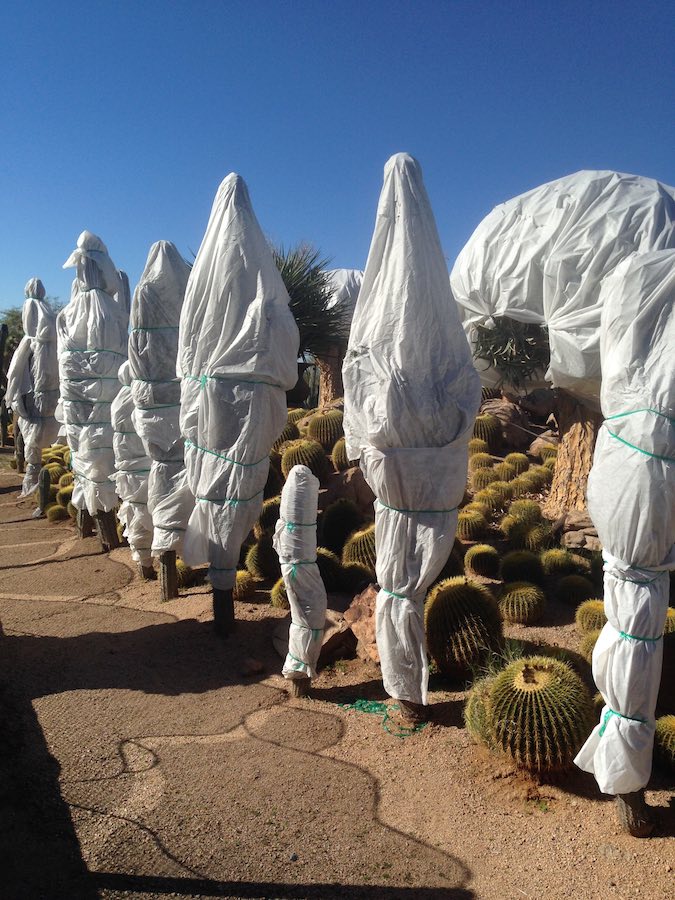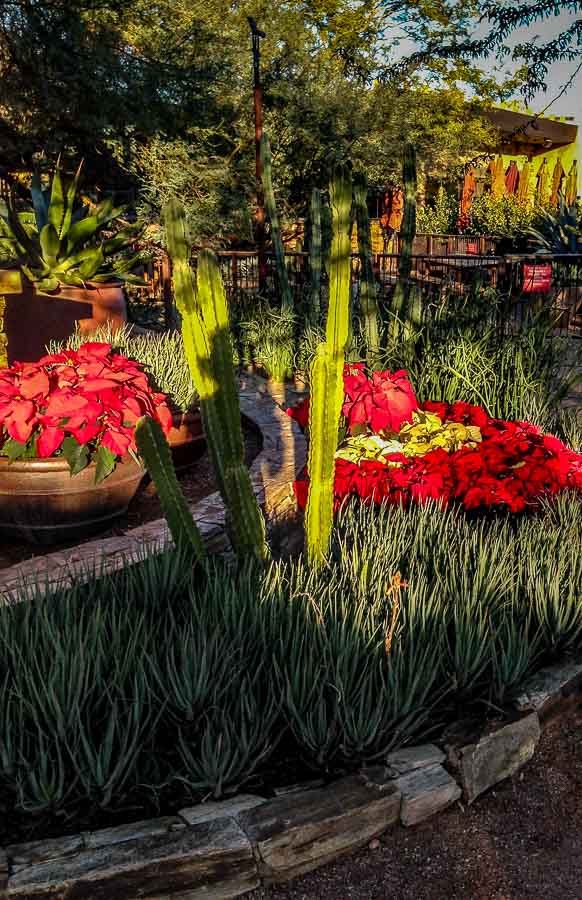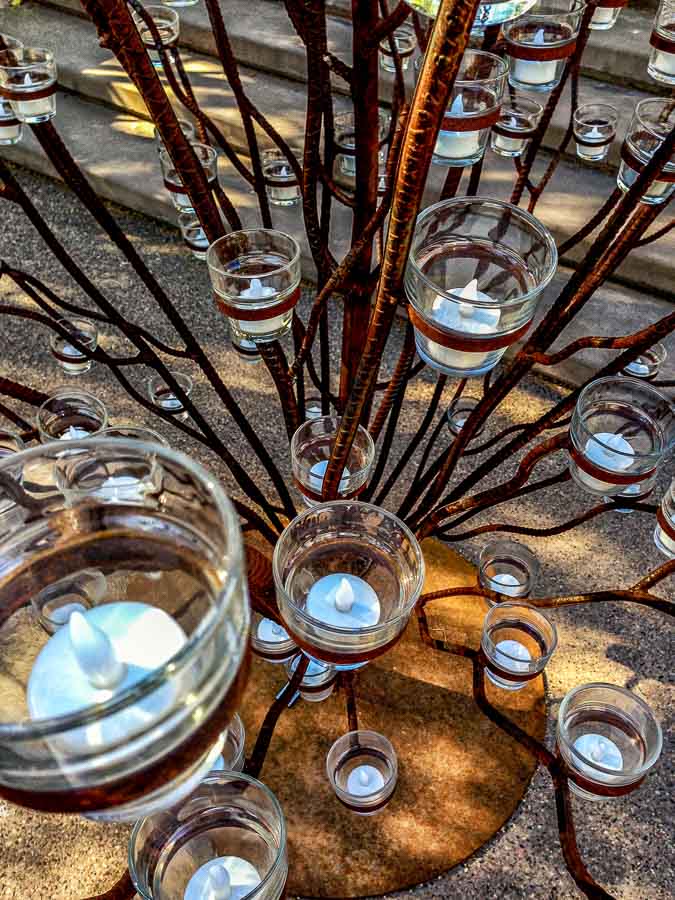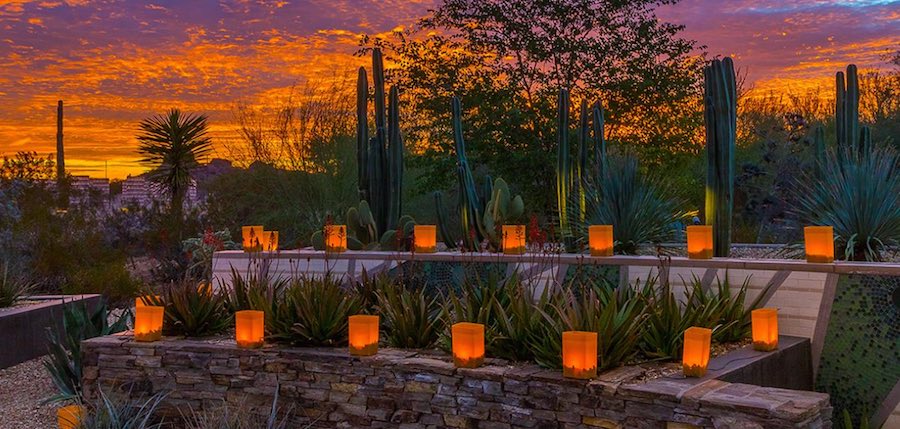In Part 1 of my story about the Master Gardener’s visit to Agave Farms, I mentioned the large size of the facility. Many of the sections have stone walls creating raised beds that are also very large.
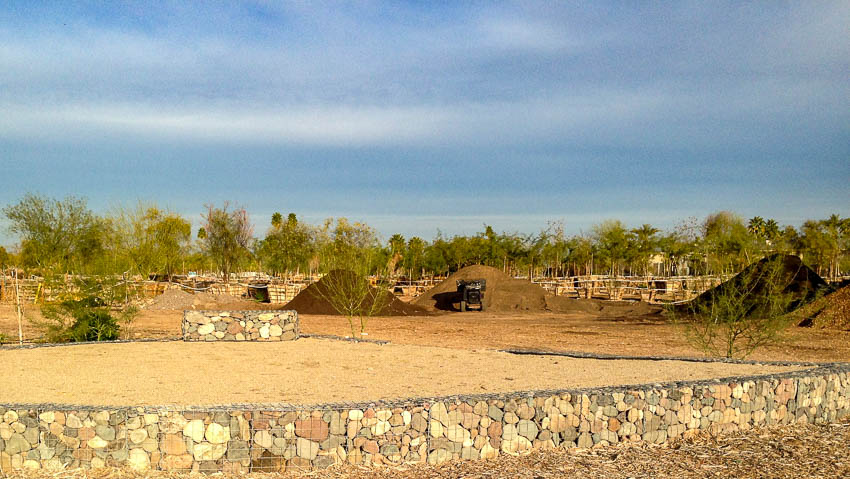
If you visit the area near the informal entrance you may be able to find a variety of plantings, pots, etc. to provide ideas and inspiration such as this large planting of Euphorbia tirucalli is commonly referred to as a ‘Sticks on Fire’ or another similar name.
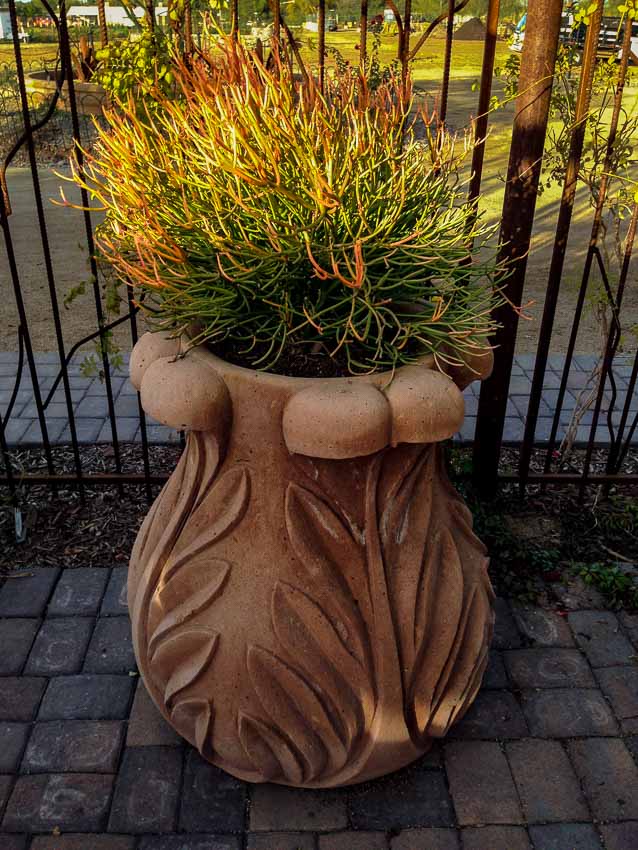
As previously noted, AF grows vegetables, cacti, succulents and a host of other plants. Another of their specialties is roses. Whenever I mention rose growing in the desert to my friends from other areas, they are surprised, but Arizona is one of the largest exporters of roses in the US.

AF carries a large variety of roses. They have a three-fold brochure listing the names of their roses so gardeners can more easily find a particular variety.

If there is a color you are seeking, you will most likely find it at AF. Interestingly enough, they grow many of their roses in mesh-like bags which are environmentally friendly. I had never seen these before, but they seemed to work well.
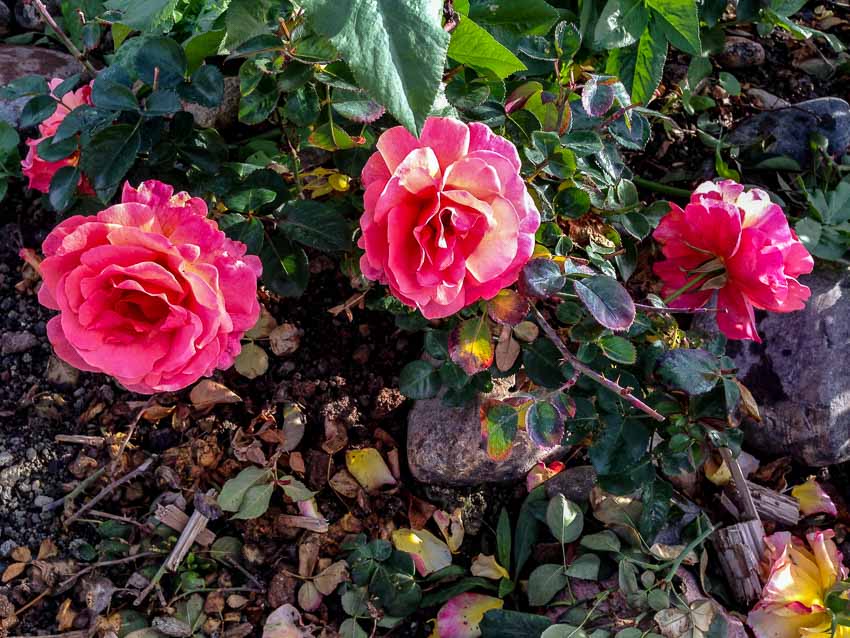
I was seeking a very particular climbing rose that does well in our zone, Golden Showers, and sure enough, I was able to find the plant at AF and it is now doing well in our courtyard landscape.
I did not get the specific name of the plant pictured below, but it was somewhat unique for our area. I particularly liked the leaf form and the white-ish tips at the end of the flowers.
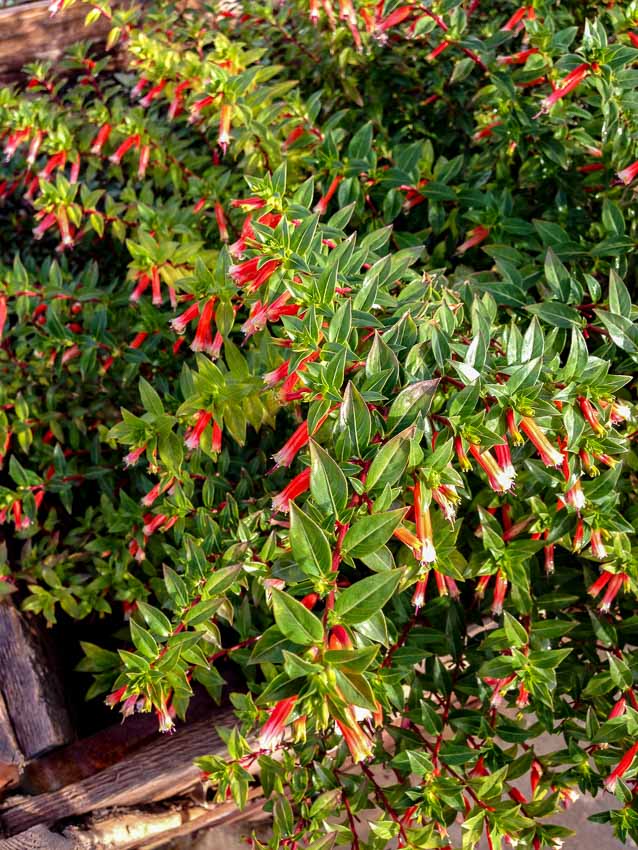
Flowers and vegetables are planted in groupings and interspersed. This may be to deter certain pests or perhaps just to develop a more colorful display.
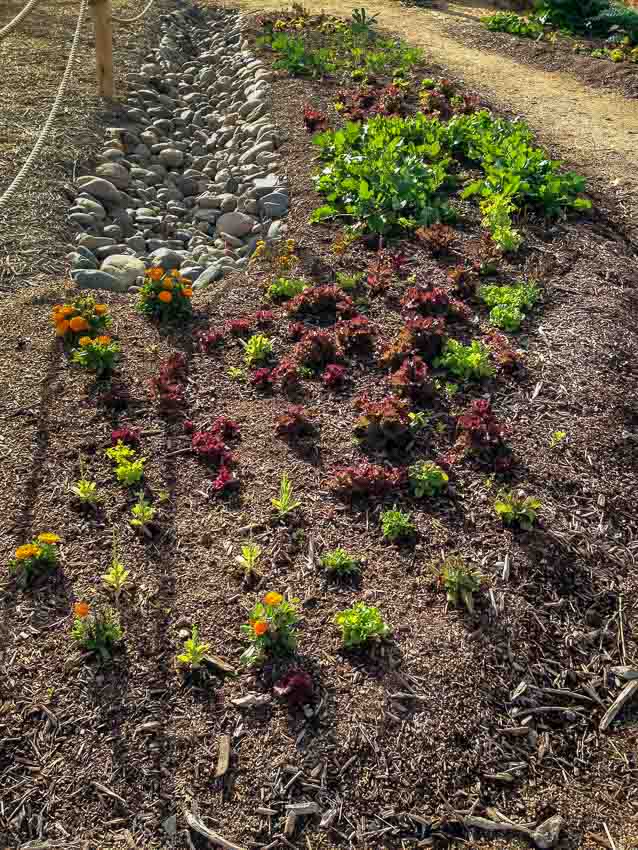
In one section of the farm, they were demonstrating hay bale gardening for those who don’t have a fertile plot or otherwise find this an acceptable alternative.

More cool weather veggies and flowers.

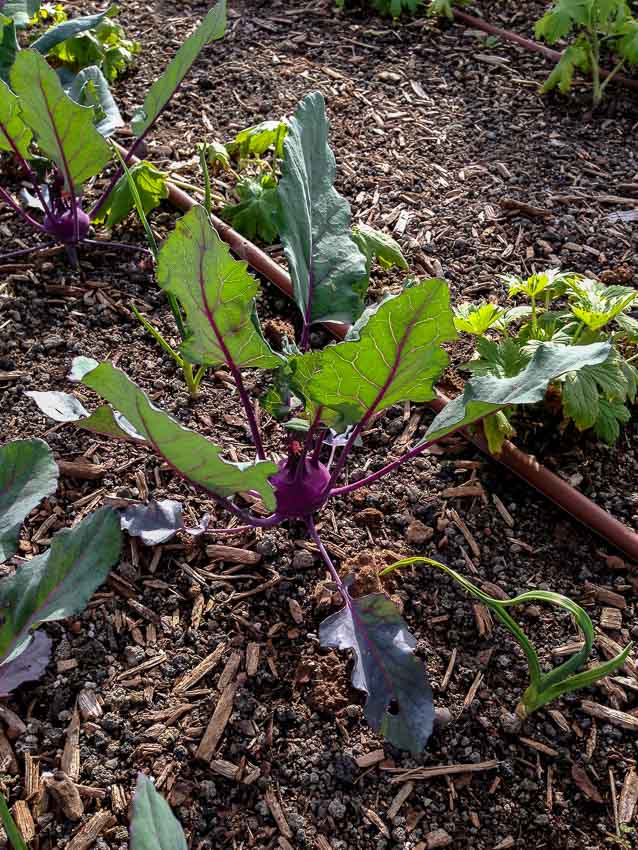
It was fun just to walk around. Up against a fence, I saw this half-column ornament which was different!

There are constant reminders that AF is in the middle of the city as apartments surround it and can be seen across from this water retention pond.

A chicken coop constructed from an old truck cargo area was another interesting stop.
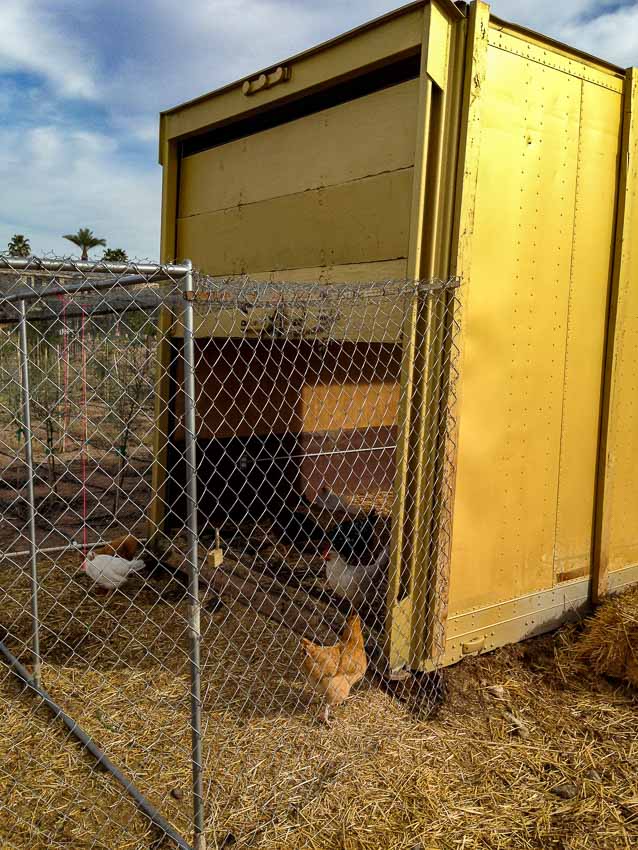

Just before I left the farm to head home, I saw this unique bicycle cart. Isn’t the color wonderful?!
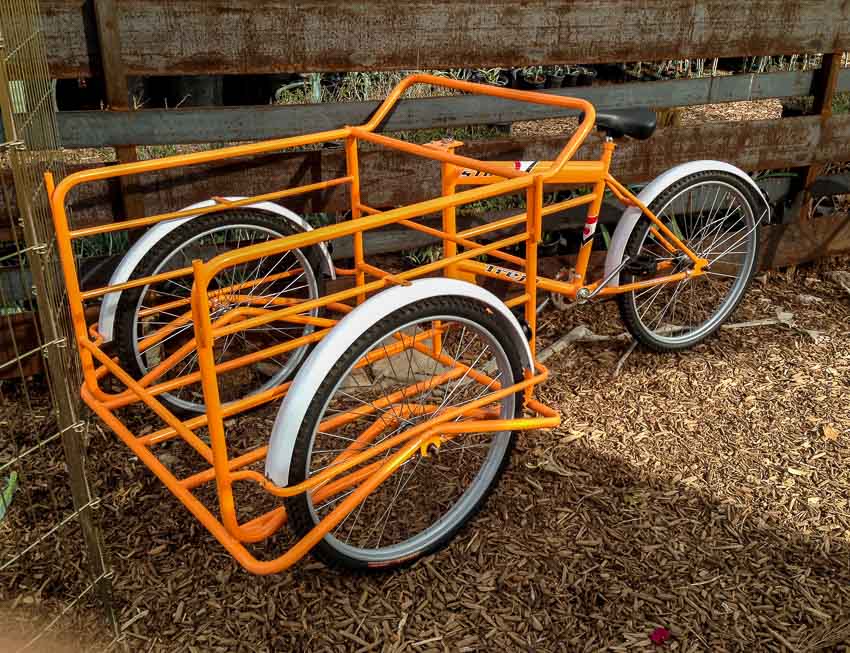
*All photographs Copyright by Jeffrey B. Ross with all rights reserved.
See previous posts about life in the desert HERE or gardening HERE.
